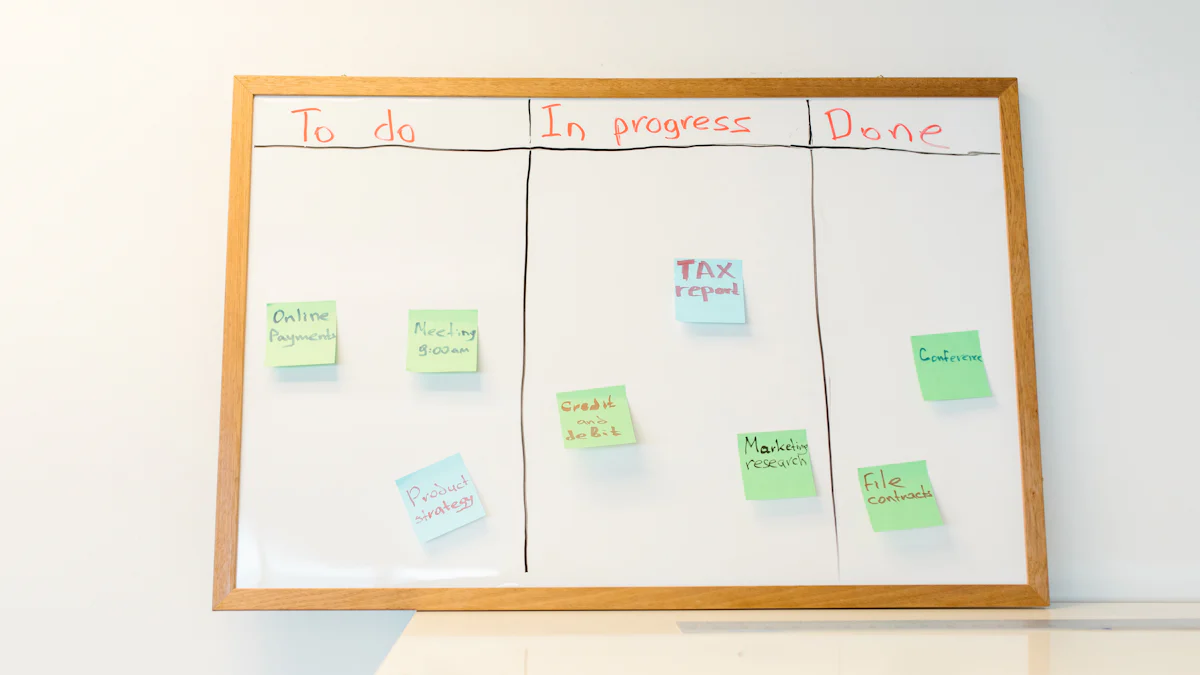Understanding Kanban for Agile Teams: A Guide for Efficient Workflow

Kanban Essentials
Kanban is an essential tool for streamlining workflow processes within agile teams. By visualizing tasks on an agile Kanban board, teams can effectively manage and prioritize work, leading to improved agile workflow management. The use of Kanban for agile teams promotes transparency and enables a more efficient allocation of resources, ultimately enhancing productivity and delivery.
Visualizing Workflow
Visualizing the workflow in an agile team is crucial for understanding the progress of work in a clear and transparent manner. By having a visual representation of tasks and their status, team members can easily track the flow of work and identify any bottlenecks or delays. This transparency fosters better communication and collaboration among team members, leading to improved efficiency and productivity.
Importance of Visualizing Workflow
Visualizing workflow allows teams to have a clear understanding of the status of each task, promoting transparency and accountability.
It helps in identifying any potential issues or delays in the workflow, enabling timely interventions to keep the work on track.
The visual representation of tasks fosters better communication among team members, ensuring everyone is on the same page regarding project progress.
Implementing a Kanban Board
A Kanban board is an integral part of agile workflow visualization as it visually represents the workflow stages and individual tasks.
It helps teams manage and prioritize tasks effectively by providing a clear overview of the current status of each task.
Implementing a Kanban board promotes transparency, collaboration, and efficient allocation of resources within agile teams.
Work in Progress Limits
In agile workflow management, setting work in progress (WIP) limits is a key practice for enhancing team efficiency and task management. By implementing WIP limits, teams can focus on completing tasks before taking on new work, which promotes a more organized and streamlined workflow.
Setting Work in Progress Limits
Setting work in progress limits involves determining the maximum number of tasks that can be actively worked on at any given time. This constraint encourages team members to concentrate on completing their current tasks before pulling in new work. As a result, it helps prevent multitasking and ensures that each task receives the necessary attention for timely completion.
Benefits of Work in Progress Limits
Reduced Multitasking: Implementing WIP limits reduces the temptation to juggle multiple tasks simultaneously, allowing team members to maintain focus and productivity.
Smoother Workflow: By limiting the number of tasks in progress, teams can avoid bottlenecks and overburdening, leading to a more consistent and efficient workflow.
Implementing work in progress limits is an effective strategy for agile task management, as it encourages prioritization and facilitates the completion of tasks without unnecessary delays or interruptions.
Pull-Based System
In agile task allocation, the pull-based system operates on the principle of allowing teams to pull work only when they have the capacity to take on new tasks. This approach promotes a steady and manageable workflow by preventing team members from being overburdened with an excessive number of tasks at any given time. By embracing the pull-based system, agile teams can ensure that work is undertaken in a controlled manner, leading to improved efficiency and productivity.
Advantages of Pull-Based System
Reduced Overburdening: The pull-based system prevents team members from feeling overwhelmed by an excessive workload, enabling them to focus on completing tasks effectively without unnecessary stress.
Encourages Collaboration: By allowing teams to pull work based on their capacity, this system fosters collaboration as team members can support each other in completing tasks, leading to enhanced teamwork and productivity.
The agile pull system offers a more balanced and sustainable approach to task allocation within agile teams, ultimately contributing to a more efficient and harmonious workflow.
Lean Principles in Kanban
Kanban is deeply rooted in lean principles, emphasizing continuous improvement and the elimination of waste in the workflow. By applying lean principles to Kanban, agile teams can optimize their processes and achieve greater efficiency in task management.
Applying Lean Principles
Incorporating lean principles into Kanban involves fostering a culture of continuous improvement within agile teams. This entails encouraging team members to regularly assess their workflow, identify areas for enhancement, and implement changes to streamline processes. By embracing a mindset of ongoing improvement, teams can eliminate inefficiencies and deliver higher quality results with increased efficiency.
Measuring Cycle Time and Lead Time
Understanding and measuring cycle time and lead time are essential components of optimizing workflow efficiency within agile teams. Cycle time refers to the duration it takes for a task to move from start to finish, while lead time encompasses the total time taken from task initiation to completion. By analyzing these metrics, teams can pinpoint bottlenecks, identify opportunities for improvement, and make informed decisions to enhance their workflow processes.
This approach aligns with lean kanban principles by promoting a systematic method for identifying areas of inefficiency and implementing targeted improvements. As a result, agile teams can achieve greater productivity and streamlined workflows.
Optimizing Agile Workflow with Kanban
Implementing Kanban in agile teams offers a powerful approach to optimizing workflow efficiency and enhancing productivity. By visualizing tasks, setting work in progress limits, and embracing lean principles, Kanban enables agile teams to streamline their processes and achieve greater efficiency in task management.
See Also
Utilizing Kanban Boards: A Stepwise Manual for Effective Workflow Control
Comprehending Kanban Boards: A Manual for Enhancing Productivity
Kanban versus Scrum: Selecting the Appropriate Agile Approach for Your Project

